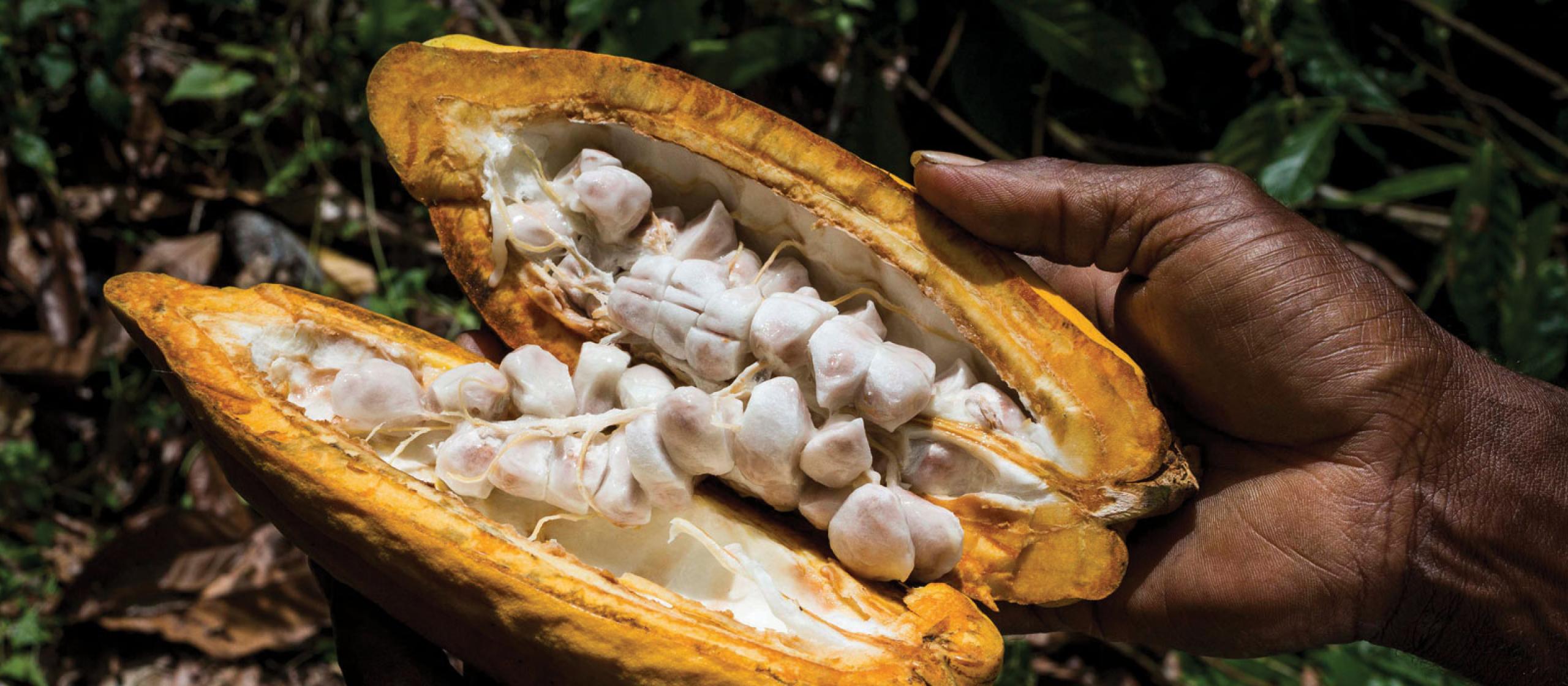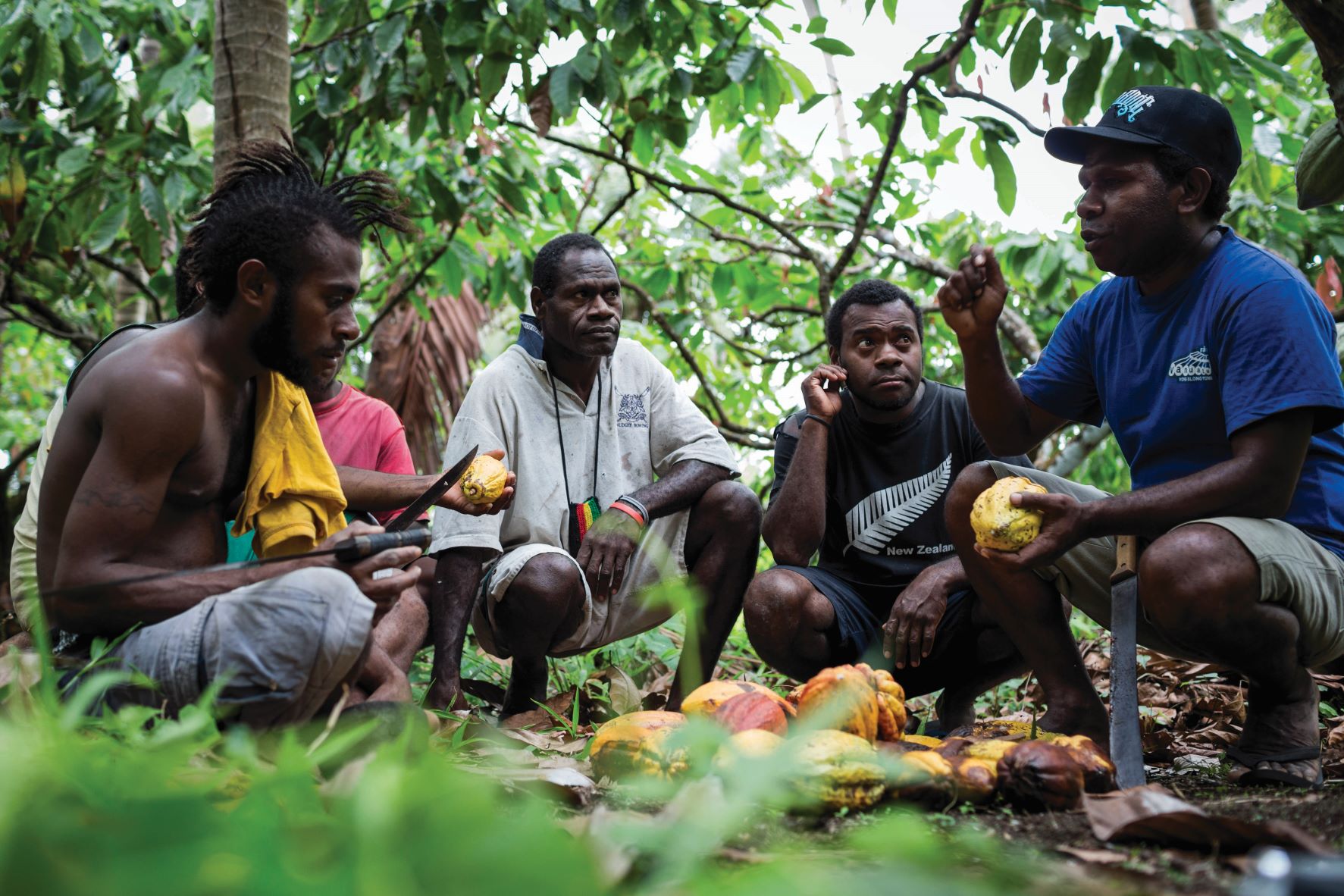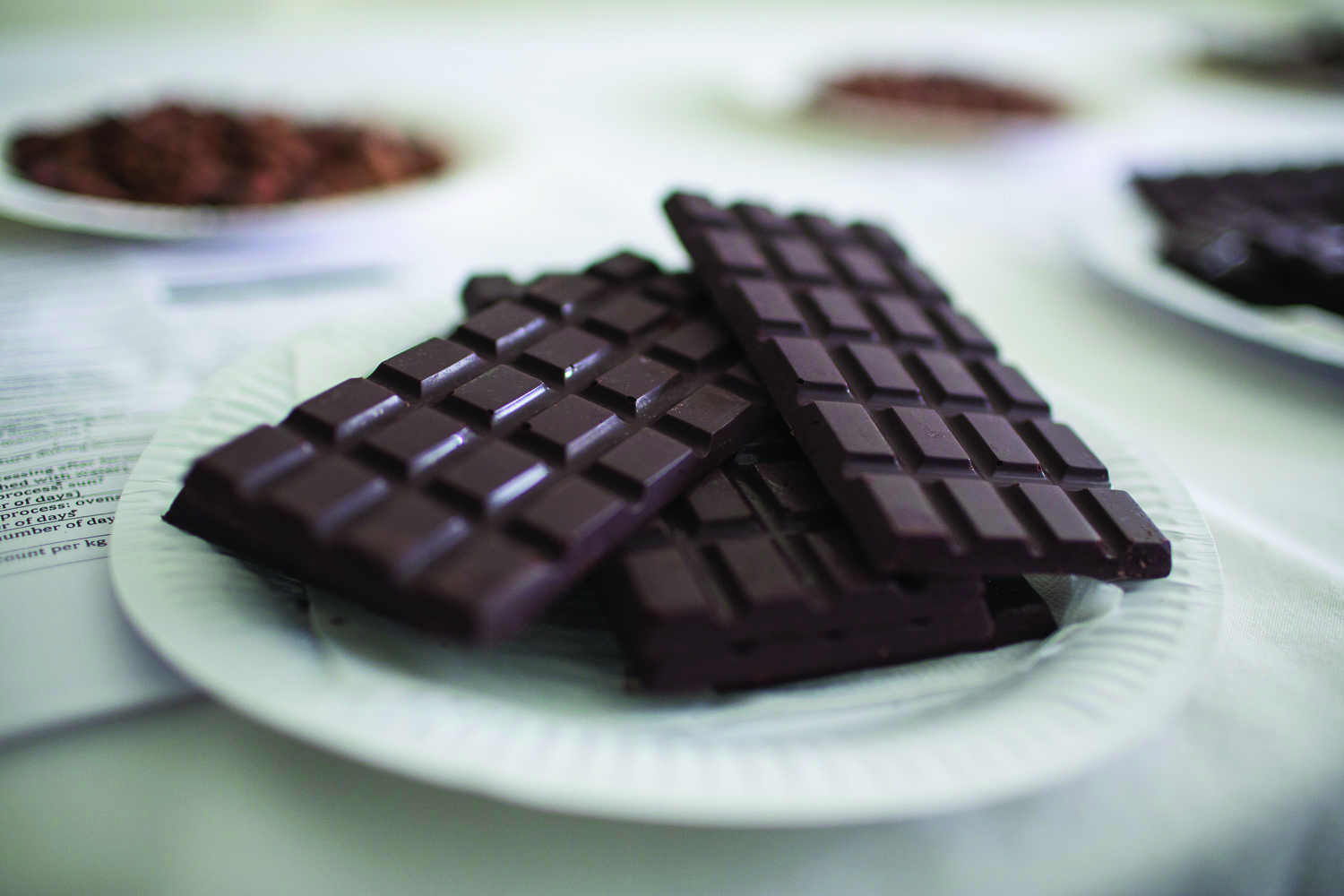The inaugural South Pacific Cocoa of Excellence Awards in 2022 was a small affair, a COVID-19 pivot that allowed the region’s smallholder cocoa producers to test their mettle, and the quality of their beans, against the same stringent international criteria used for the biennial international Cocoa of Excellence Awards in Paris.
Producers from the Pacific region have previously picked up gold, silver and bronze at the Cocoa of Excellence Awards, including growers from Papua New Guinea, Samoa, Vanuatu and Fiji. But when travel restrictions brought further entries to a halt, it provided the genesis for a purely local affair, says cocoa research, Professor Randy Stringer, from the University of Adelaide.
Professor Stringer has been working on cocoa research in the Pacific region for more than a decade, including a project in the ACIAR-supported Pacific Agribusiness Research for Development Initiative that dates back to 2010.
‘In that project, we identified how to help smallholders increase production. Working on farm practices – pruning, weed removal, disease control – they were able to increase their yields threefold. But they were still selling into a bulk commodity market; the increased yield wasn’t resulting in any significant increase in income.’
Professor Stringer said as part of that project, smallholder growers, some of them fifth generation, were introduced to ‘real’ chocolate for the first time. Not the highly sweetened chocolate confectionary bars they were familiar with, but high-end fine dark chocolate that represents the pinnacle in quality and price.
This has become the new goal for farmers to aim for. And helping them to tap into this market is the focus of the latest ACIAR-supported value-chain project working with smallholders in Fiji, Samoa, Solomon Islands, Vanuatu and Australia.
The South Pacific Cocoa of Excellence Awards is part of this 5-year project, which wraps up in March 2023. Professor Stringer says it put the 15 participants in front of international judges and chocolate makers in Australia, New Zealand, the USA and the Netherlands.
The chocolates produced for the competition are made according to the Cocoa of Excellence recipe and highlight the nuances that unique weather, soil and local production methods can contribute to the resulting chocolate flavour and aroma.
Mr Yan Diczbalis, from the Queensland Department of Agriculture and Fisheries, leads the value-chain project and said single-source ‘fine’ chocolate and trending bean-to-bar chocolate outlets represent the fastest-growing segment of the chocolate industry.
Although ‘single-source’ can be a country of origin, it can also come down to a growing region, or even a village or growers’ cooperative, rather than a specific variety of cocoa bean, explained Mr Diczbalis.
In this fine chocolate market, the origins of the cocoa, the grower’s production techniques and the genetics of the cocoa crop are all part of the story and the final value of the product.
As part of the value-chain project, Mr Diczbalis and his team have mapped the genetic make-up of cocoa crops across Fiji, Samoa, Solomon Islands and Vanuatu.
Mr Diczbalis said the existing genetics, for the most part, are the legacy of the region’s colonial history; the cocoa tree itself, Theobroma cacao, is native to South America.
The project’s genetic mapping has helped to identify selections in the Pacific region, highlighting those that produce superior beans suited to premium chocolate making. Of particular note is the high level of Trinitario and Criollo genetics found in Samoa, which are noted as ‘fine-flavoured’ varieties. The beans are less astringent, less bitter, and are ideal for dark chocolate.
The value-chain project has also provided smallholders with training in simple propagation techniques to help them reproduce their best varieties and best-performing trees, targeting superior genetics for a higher value end use.
‘Clonal reproduction using grafting is a relatively simple and low-cost technique that smallholders can master with readily available tools – a sharp knife and some tape,’ said Mr Diczbalis, who helped coordinate a series of grafting workshops. The technique also accelerates new production, with trees beginning to yield in half the time – 18 months, compared to 4 years for trees produced from seed.





